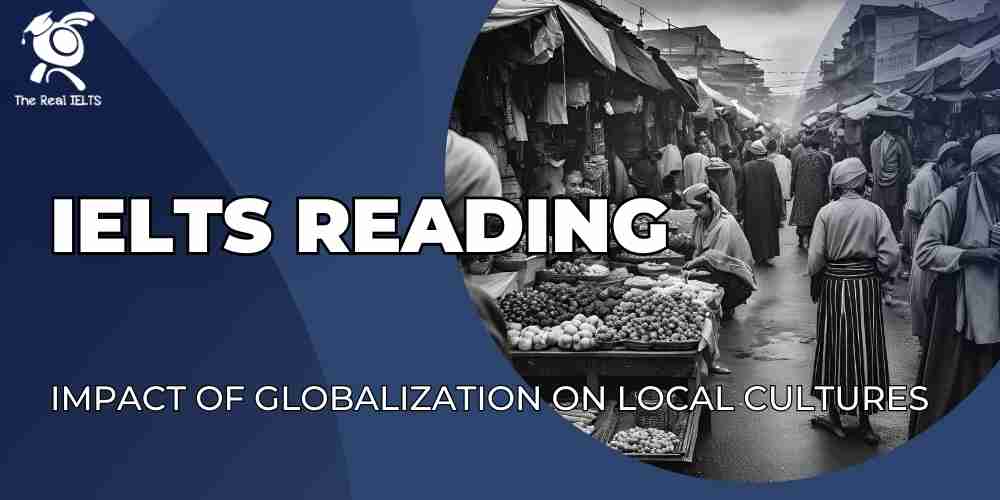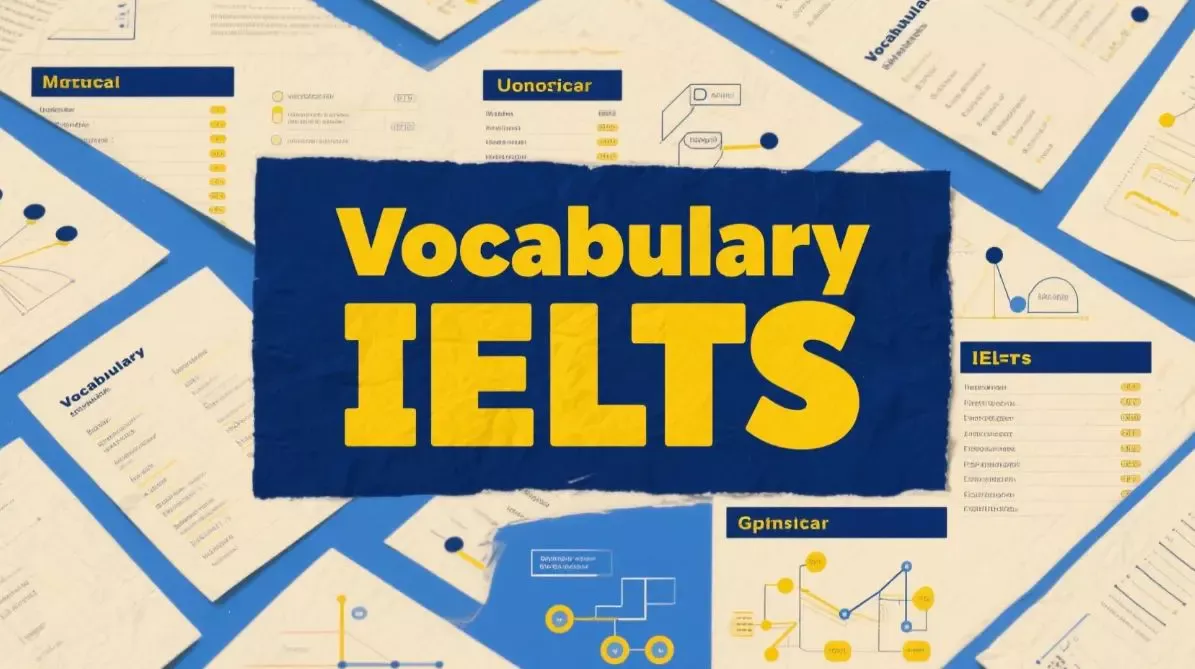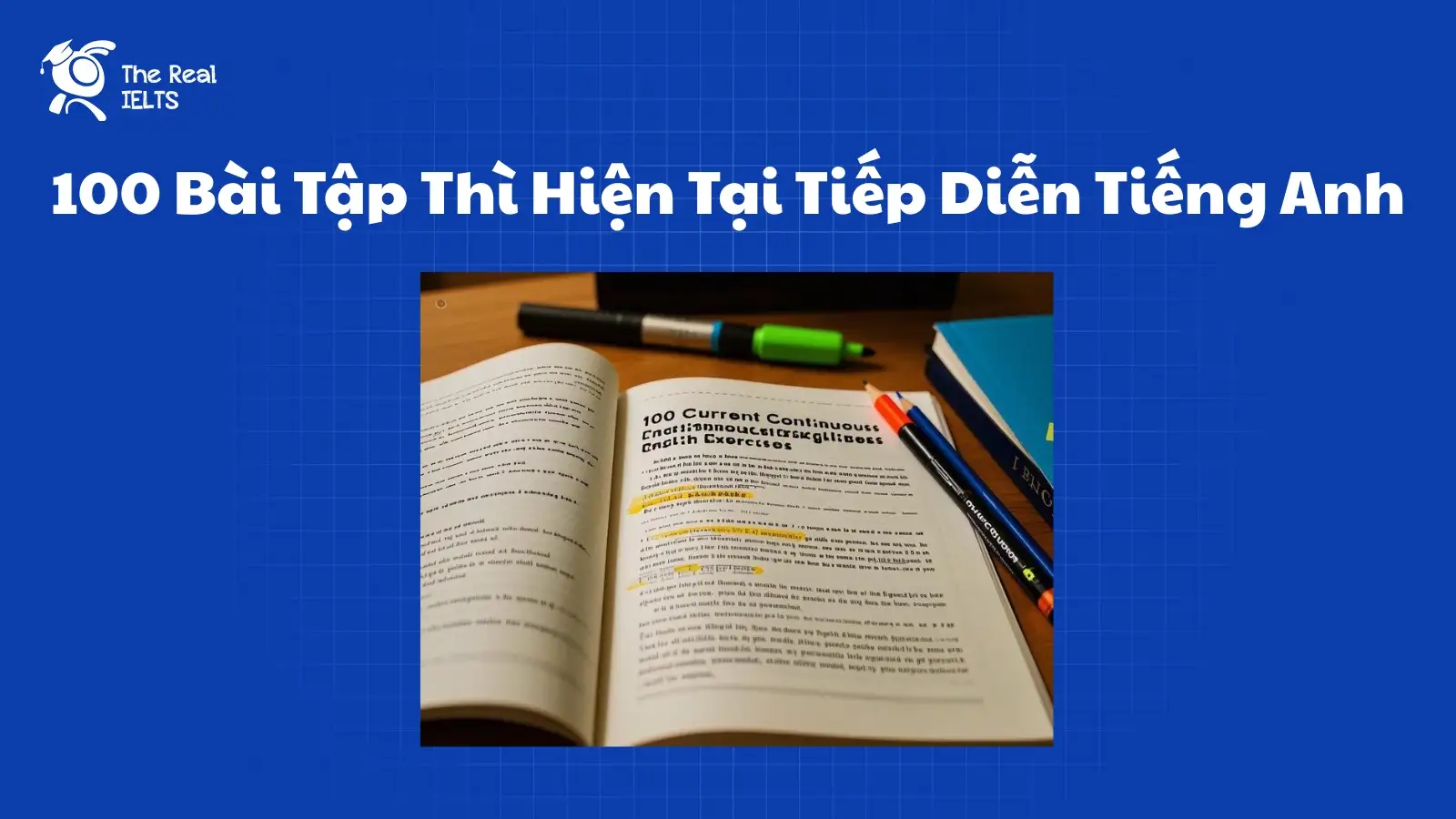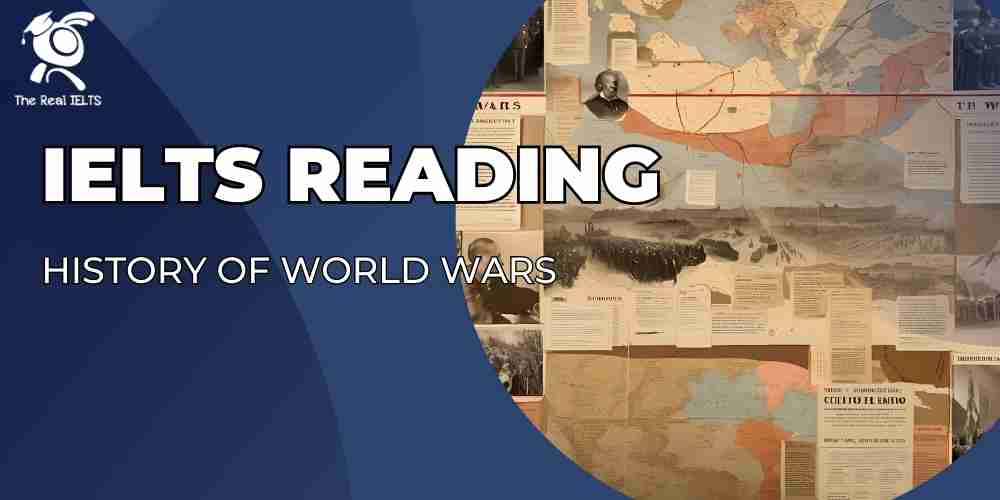Luyện tập IELTS Reading ngày 1 có chủ đề: Impact of Globalization on Local Cultures. Bài này thuộc chuỗi IELTS Reading: 30 chủ đề luyện tập.
Bài này dành ra 30 phút để luyện tập IELTS Reading và trả lời câu hỏi ở bên dưới
| Globalization has significantly transformed the world in various aspects, including economies, politics, and cultures. While it has contributed to increased connectivity and economic growth, its impact on local cultures is a topic of growing concern. This essay will explore how globalization affects traditional customs, values, languages, and cultural identity, highlighting both positive and negative consequences. Loss of Traditional Customs and Values One of the most evident impacts of globalization on local cultures is the erosion of traditional customs and values. As people gain access to global media, entertainment, and consumer products, there is a tendency to adopt foreign customs that may conflict with indigenous practices. For instance, Western holidays such as Halloween and Valentine’s Day are becoming increasingly popular in non-Western countries, often overshadowing local festivals and traditions. This shift can result in a loss of cultural diversity, as younger generations may become more inclined to embrace global trends rather than preserve their own cultural heritage. Homogenization of Culture Another consequence of globalization is cultural homogenization, where distinct cultural practices and traditions are replaced by a more uniform global culture. This is particularly noticeable in urban centers, where global fast food chains, fashion brands, and entertainment platforms dominate. The spread of English as a global language also contributes to this phenomenon, as it increasingly becomes the preferred medium for communication in international business, education, and media. As a result, smaller, less dominant languages are at risk of extinction. UNESCO estimates that half of the world’s languages could disappear by the end of this century if current trends continue. Preservation and Promotion of Cultural Heritage Despite these challenges, globalization also offers opportunities for the preservation and promotion of local cultures. The rise of the internet and social media allows for the sharing and dissemination of cultural practices and traditions to a global audience. For example, cultural festivals such as Chinese New Year or India’s Diwali are now celebrated in many parts of the world due to increased awareness and the efforts of diaspora communities. Additionally, the tourism industry provides a platform for showcasing and preserving local cultures. Many countries have capitalized on their cultural heritage to attract visitors, which can also serve as a means of preserving traditional arts, crafts, and rituals. Cultural Exchange and Hybridization Globalization has also facilitated cultural exchange, leading to the development of hybrid cultures that blend elements from various traditions. This exchange can enrich local cultures by introducing new ideas, cuisines, and art forms. For instance, the fusion of Eastern and Western fashion has given rise to unique styles, while culinary traditions have merged to create exciting new flavors. Furthermore, cross-cultural collaborations in fields such as music, film, and art have flourished, allowing diverse cultures to inspire and influence each other. Challenges to Cultural Identity However, the constant exposure to global cultures can create identity crises, especially for younger generations. As they navigate between traditional values and global norms, they may struggle to reconcile their cultural heritage with the modern world. This challenge is particularly evident in countries undergoing rapid development and urbanization, where rural populations are increasingly exposed to urban lifestyles. The result is often a dilution of cultural identity, as traditional practices are seen as outdated or irrelevant. Balancing Globalization and Cultural Preservation In response to these challenges, many governments and cultural organizations are taking steps to protect and promote local cultures. Policies aimed at preserving indigenous languages, traditional art forms, and historical landmarks are being implemented in various countries. For example, in New Zealand, the government has taken significant steps to revive the Maori language and culture through education and media initiatives. Similarly, Japan has made efforts to protect its cultural heritage by designating certain traditional practices as “intangible cultural assets,” ensuring their continuation for future generations. Conclusion Globalization has undoubtedly impacted local cultures, leading to both positive and negative outcomes. While it has facilitated cultural exchange and offered new opportunities for the promotion of traditions, it has also contributed to the erosion of traditional values and the homogenization of culture. To ensure a balanced approach, it is essential for societies to embrace the benefits of globalization while actively working to preserve their unique cultural identities. This can be achieved through policies that promote cultural diversity, education programs that raise awareness of local traditions, and efforts to protect endangered languages and practices. By doing so, globalization can coexist with the preservation of local cultures, enriching the global cultural landscape rather than diminishing it. | Globalization – Toàn cầu hóa Local cultures – Văn hóa địa phương Erosion – Sự xói mòn, mai một Traditional customs – Phong tục truyền thống Values – Giá trị Indigenous practices – Tập tục bản địa Cultural diversity – Đa dạng văn hóa Cultural heritage – Di sản văn hóa Homogenization – Sự đồng nhất hóa Global culture – Văn hóa toàn cầu Urban centers – Trung tâm đô thị Dominant languages – Ngôn ngữ thống trị Cultural exchange – Trao đổi văn hóa Cultural hybridization – Sự lai hóa văn hóa Tourism industry – Ngành du lịch Cultural identity – Bản sắc văn hóa Diaspora communities – Cộng đồng người di cư Cross-cultural collaborations – Hợp tác xuyên văn hóa Identity crisis – Khủng hoảng bản sắc Urbanization – Đô thị hóa Dilution – Sự pha loãng Cultural preservation – Bảo tồn văn hóa Indigenous languages – Ngôn ngữ bản địa Intangible cultural assets – Di sản văn hóa phi vật thể Endangered languages – Ngôn ngữ đang có nguy cơ tuyệt chủng Cultural landscape – Cảnh quan văn hóa Cultural norms – Chuẩn mực văn hóa Art forms – Loại hình nghệ thuật Historical landmarks – Di tích lịch sử Cultural organizations – Tổ chức văn hóa |
Câu hỏi
Multiple Choice Questions (MCQs)
- What is one of the negative impacts of globalization on local cultures?
A. Strengthening traditional customs
B. Erosion of traditional customs and values
C. Increasing cultural diversity
D. Promoting local languages - What does “cultural homogenization” refer to?
A. The blending of different cultures
B. The extinction of minority languages
C. The replacement of distinct cultures with a uniform global culture
D. The preservation of traditional practices - Which of the following is mentioned as a positive effect of globalization?
A. Decline in cultural identity
B. Revival of dying traditions
C. Promotion of cultural heritage through tourism
D. Rapid urbanization in rural areas - How has the spread of English contributed to the impact of globalization?
A. By making global communication easier
B. By preserving local languages
C. By promoting indigenous practices
D. By reducing the influence of media
True/False/Not Given Questions
- Globalization has only negative effects on local cultures.
True / False / Not Given - Tourism plays a role in the preservation of local cultures.
True / False / Not Given - Half of the world’s languages are predicted to disappear by the end of the century.
True / False / Not Given
Matching Information
- Match the following effects of globalization with their descriptions:A. Cultural Exchange
B. Cultural Identity Crisis
C. Homogenization
D. Preservation through Tourism- __ Blending of cultural traditions to create new art forms
- __ The dominance of a global culture over local practices
- __ Difficulties for younger generations in reconciling traditional and modern values
- __ The promotion of local cultures to attract visitors
Short Answer Questions
- What steps are some governments taking to protect local cultures?
- Why are some languages at risk of extinction according to the passage?
- How does globalization create opportunities for cultural exchange?
Đáp án IELTS Reading
Multiple Choice Questions (MCQs)
- What is one of the negative impacts of globalization on local cultures?
B. Erosion of traditional customs and values - What does “cultural homogenization” refer to?
C. The replacement of distinct cultures with a uniform global culture - Which of the following is mentioned as a positive effect of globalization?
C. Promotion of cultural heritage through tourism - How has the spread of English contributed to the impact of globalization?
A. By making global communication easier
True/False/Not Given Questions
- Globalization has only negative effects on local cultures.
False (Globalization has both positive and negative effects as mentioned in the passage.) - Tourism plays a role in the preservation of local cultures.
True (The passage states that tourism helps showcase and preserve local cultures.) - Half of the world’s languages are predicted to disappear by the end of the century.
True (The passage mentions that UNESCO estimates half of the world’s languages could disappear by the end of this century.)
Matching Information
- Match the following effects of globalization with their descriptions:A. Cultural Exchange
- Blending of cultural traditions to create new art forms
- Difficulties for younger generations in reconciling traditional and modern values
- The dominance of a global culture over local practices
- The promotion of local cultures to attract visitors
Short Answer Questions
- What steps are some governments taking to protect local cultures?
Governments are implementing policies to preserve indigenous languages, traditional art forms, and historical landmarks. For example, New Zealand has revived the Maori language, and Japan has designated traditional practices as “intangible cultural assets.” - Why are some languages at risk of extinction according to the passage?
Smaller, less dominant languages are at risk of extinction due to the spread of global languages like English and the dominance of global culture. - How does globalization create opportunities for cultural exchange?
Globalization facilitates the sharing and blending of cultural elements such as art, music, and cuisine, leading to cultural hybridization and enriching local cultures.















